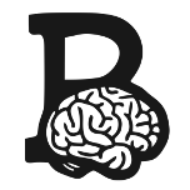
BREAKING TAB
In aural traditions (like the banjo), the pinnacle of musicianship, regardless of chosen instrument, is musical fluency, or the ability to take imagined sounds and, via the movement of the hands, get them out into the world and into the ears of others.
The ability to do such a thing requires a specific type of neural machinery, which we build through practice. Specifically, it requires that we build mappings in the brain between the sounds we imagine and the instrument-specific movements of the hands needed to make them.
And, as you’ll note, written notation isn’t part of the machinery needed for musical fluency. Which means that our goal, if we wish to develop this ability, is to ensure that written notation (in this case banjo tab) isn’t baked into our core banjo playing circuitry.
This is not to say written notation, in this case banjo tablature, shouldn’t be used in the learning process. It can be an extremely useful tool, if used wisely.
Using it wisely means not using it in ways that bakes it into your banjo playing networks. Once this happens, playing without tablature becomes a biological impossibility. And learning to play without it requires that you build new, tab-independent, banjo playing neural networks.
The easiest way to avoid such a situation of tab dependency is to build those networks right the first time, paying careful attention to the sequence and structure of practice.
[RELATED: The Brainjo Method is designed to help you build tab-free neural networks that allow you to reach your full musical potential. Click here for more information on the course for fingerstyle banjo, or here for the course for clawhammer banjo]
The problem is that oftentimes it isn’t used wisely, which leads to tab dependency.
The good news? Even if you’ve become dependent on tab, it’s entirely possible to break free from it.
Remember, tab dependency is not indicative of some inherent flaw in your own capacity to make music by ear, but instead a natural biological consequence of the manner in which you went about learning.
And the first step to breaking free is recognizing the signs of it, so you can alter course accordingly.
The 5 Signs of Tab Dependency
First, let’s review some of the signs of tab dependency:
- You find it difficult to “memorize” a new tune (“memorizing” tunes is FAR more challenging when they’re learned exclusively by notation).
- When you learn a new tune, something feels like it’s missing. Even though all the notes are there, it doesn’t sound like the version you were trying to learn.
- You find it very difficult to make changes in the way you play a tune once it’s learned.
- You find playing a tune along with others, or jamming, very challenging.
- You have a difficult time picking out the chord progression for a new tune.
So if some of these things resonate with you, and you’d like to free yourself of the tab shackles, then let’s discuss how to right the ship.
How to Break the Habit
First, the bad news. Breaking the tab habit, as is the case with all habit breaking, requires the formation of NEW habits. Better habits to replace the old ones.
This means having to take a few steps back in order to move forwards again, like a veteran golfer with a 30 handicap and a swing full of compensations and compromises with no hope of shredding a point off his score without going back to basics to build his swing back from the ground up. It’s not in our nature to do such things.
But it’s an essential thing to do IF you wish to progress.
And it’s entirely possible by incorporating some basic principles from the Brainjo Method.
UPDATE: I recently completed a video workshop covering 6 Strategies for Breaking Free From Tab. Click here to check it out. 
